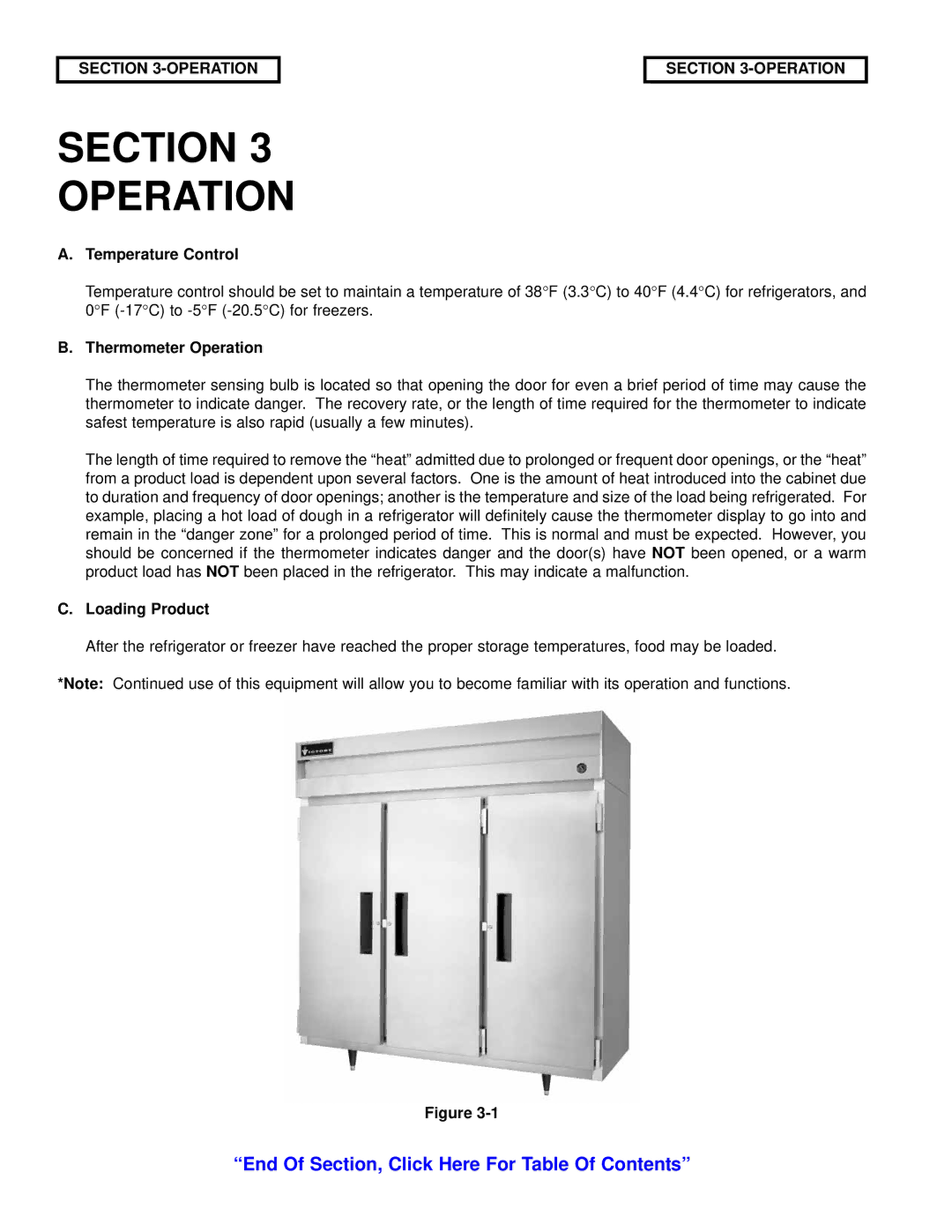
SECTION
SECTION
SECTION 3
OPERATION
A.Temperature Control
Temperature control should be set to maintain a temperature of 38°F (3.3°C) to 40°F (4.4°C) for refrigerators, and 0°F
B.Thermometer Operation
The thermometer sensing bulb is located so that opening the door for even a brief period of time may cause the thermometer to indicate danger. The recovery rate, or the length of time required for the thermometer to indicate safest temperature is also rapid (usually a few minutes).
The length of time required to remove the “heat” admitted due to prolonged or frequent door openings, or the “heat” from a product load is dependent upon several factors. One is the amount of heat introduced into the cabinet due to duration and frequency of door openings; another is the temperature and size of the load being refrigerated. For example, placing a hot load of dough in a refrigerator will definitely cause the thermometer display to go into and remain in the “danger zone” for a prolonged period of time. This is normal and must be expected. However, you should be concerned if the thermometer indicates danger and the door(s) have NOT been opened, or a warm product load has NOT been placed in the refrigerator. This may indicate a malfunction.
C.Loading Product
After the refrigerator or freezer have reached the proper storage temperatures, food may be loaded.
*Note: Continued use of this equipment will allow you to become familiar with its operation and functions.
Figure
